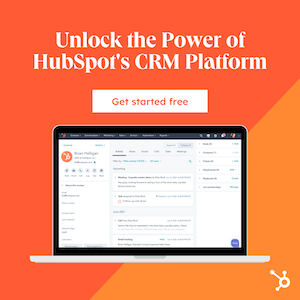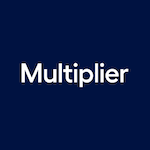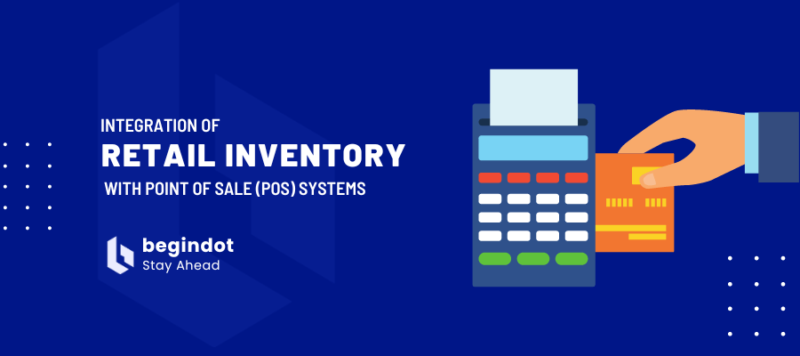Best Dutch Accounting Software
Dutch accounting software is a digital tool designed to manage and organize financial and accounting tasks for businesses operating in the Netherlands. It streamlines processes such as bookkeeping, invoicing, tax reporting, and financial analysis, complying with Dutch regulations. Small and medium-sized enterprises (SMEs), accountants, and finance professionals benefit significantly from its features.
Understanding Dutch Accounting Practices
The Dutch accounting system is known for its reliability and adherence to international standards, making it a significant aspect of doing business in the Netherlands. Understanding these practices is essential for companies operating in or expanding to this region.
How Does Dutch Accounting Software Support Businesses?
Dutch accounting software plays a crucial role in helping businesses comply with local accounting regulations and streamline their financial processes. Here’s how:
- Compliance with Dutch GAAP and IFRS: Dutch accounting software ensures that businesses adhere to the Dutch Generally Accepted Accounting Principles (GAAP) and International Financial Reporting Standards (IFRS), providing accurate and standardized financial reporting.
- Automation of Financial Processes: These software solutions automate various financial processes, including invoicing, payroll, tax calculations, and financial reporting. Automation reduces the likelihood of human error and increases efficiency.
- Real-time Financial Monitoring: Businesses can monitor their financial health in real-time, allowing for timely decision-making. Real-time insights into cash flow, profit and loss, and other key financial metrics are invaluable for strategic planning.
- Integration with Banking Systems: Many Dutch accounting software solutions integrate seamlessly with local and international banking systems, facilitating smooth transactions, reconciliations, and financial tracking.
- Multi-language and Multi-currency Support: Given the international nature of Dutch businesses, accounting software often supports multiple languages and currencies, making it easier for companies to manage cross-border operations.
- Regulatory Updates: The software keeps businesses updated with the latest changes in Dutch accounting laws and regulations, ensuring continuous compliance without the need for manual updates.
Key Features of Accounting Software in the Netherlands
When choosing accounting software in the Netherlands, businesses should look for the following key features:
- User-friendly Interface: A user-friendly interface ensures that even those without extensive accounting knowledge can navigate the software easily, reducing training time and increasing productivity.
- Customizable Reporting: The ability to customize financial reports according to specific business needs is essential. This feature allows businesses to generate reports that provide the most relevant insights for their operations.
- Cloud-based Solutions: Cloud-based accounting software offers the flexibility to access financial data from anywhere, at any time. It also ensures data security and regular backups, protecting against data loss.
- Scalability: The software should be scalable to accommodate the growth of the business. This includes handling increased transaction volumes and integrating with other business management tools.
- Security Features: Robust security features, including encryption, two-factor authentication, and regular security updates, are vital to protect sensitive financial information.
- Customer Support: Reliable customer support is crucial for resolving any issues that may arise quickly. Look for software providers that offer comprehensive support, including online resources, chat support, and phone assistance.
- Integration Capabilities: The ability to integrate with other business systems, such as Customer Relationship Management (CRM) and Enterprise Resource Planning (ERP) systems, is important for seamless data flow and operational efficiency.
How to Choose the Right Accounting Software for Your Business?
Selecting the right accounting software is crucial for efficient financial management and regulatory compliance. Here’s a comprehensive guide to help you make an informed decision.
Identifying Your Business Needs
Before diving into specific software options, it’s important to clearly understand your business’s unique requirements. Consider the following:
- Business Size and Complexity: The size of your business and the complexity of your financial transactions will influence your software needs. Small businesses might need simple invoicing and expense tracking, while larger enterprises may require comprehensive financial management tools.
- Industry-Specific Requirements: Different industries have unique accounting needs. For example, retail businesses might need robust inventory management, while service-based industries may prioritize time tracking and billing.
- Budget Constraints: Determine your budget for accounting software. While some solutions offer extensive features at a higher cost, others might provide essential functionalities at a lower price. Ensure you find a balance between cost and features.
- Scalability: Consider the future growth of your business. Choose software that can scale with your operations, handling increased transactions and integrating with other business systems as needed.
- User Accessibility: Identify who will be using the software and their level of accounting expertise. A user-friendly interface is essential for non-accountants, while advanced users may need more sophisticated features.
Comparing Account and Financial Management Options
Once you’ve identified your business needs, it’s time to compare different accounting software options. Here’s what to look for:
- Core Features: Ensure the software includes essential accounting functions like invoicing, expense tracking, bank reconciliation, payroll management, and financial reporting.
- Advanced Features: Depending on your business complexity, you might need advanced features such as budgeting and forecasting, project accounting, multi-currency support, and inventory management.
- Integration Capabilities: Check if the software integrates seamlessly with other tools you use, such as CRM systems, ERP software, and e-commerce platforms. This ensures a smooth data flow across your business operations.
- User Reviews and Ratings: Research user reviews and ratings to gauge the software’s reliability, customer support, and overall user satisfaction. Platforms like Capterra, G2, and Trustpilot can provide valuable insights.
- Trial Periods and Demos: Take advantage of trial periods and demos offered by software providers. This hands-on experience will help you assess the software’s usability and fit for your business.
Evaluating Software for VAT and Tax Compliance
In the Netherlands, ensuring VAT and tax compliance is a critical aspect of accounting. Here’s how to evaluate software for these needs:
- Automatic VAT Calculation: The software should automatically calculate VAT based on the latest Dutch tax rates, reducing the risk of errors and ensuring compliance.
- VAT Reporting: Look for features that generate detailed VAT reports, making it easier to prepare and submit your VAT returns accurately and on time.
- Tax Filing Assistance: Some software solutions offer assistance with tax filing, including generating necessary forms and providing step-by-step guidance through the filing process.
- Compliance with Dutch Tax Laws: Ensure the software is updated regularly to reflect changes in Dutch tax laws and regulations. This ensures continuous compliance without manual updates.
- Audit Support: In case of an audit, the software should provide comprehensive records and reports to support your financial statements and VAT returns.
- Customer Support and Training: Robust customer support and training resources are essential for understanding and navigating VAT and tax compliance features. Look for providers that offer extensive support options.
Top 5 Best Dutch Accounting Software in 2024
Choosing the right accounting software can significantly impact the efficiency and compliance of your business operations. Here’s a look at the top 5 best Dutch accounting software options for 2024, highlighting their key features and benefits.
Xero: Comprehensive and Easy-to-Use
Xero is a popular choice for businesses seeking a comprehensive and user-friendly accounting solution. Key features include:
- Cloud-Based Accessibility: Xero offers cloud-based access, allowing users to manage their finances from anywhere, at any time.
- Integration Capabilities: It integrates with over 800 business applications, including CRM systems, e-commerce platforms, and payment gateways.
- Automated Processes: Xero automates invoicing, bank reconciliation, and expense tracking, reducing manual workload and increasing accuracy.
- Real-Time Financial Insights: Businesses can access real-time financial data and customizable reports for better decision-making.
- Multi-Currency Support: Ideal for businesses operating internationally, Xero supports multiple currencies and provides up-to-date exchange rates.
QuickBooks: Efficient Financial Reporting
QuickBooks is renowned for its efficient financial reporting and robust feature set. Key benefits include:
- Customizable Invoices: Create and send professional invoices with customizable templates.
- Expense Tracking: Automatically track expenses by connecting bank and credit card accounts.
- Payroll Management: Manage payroll with ease, ensuring compliance with Dutch payroll regulations.
- Detailed Financial Reports: Generate comprehensive financial reports, including profit and loss statements, balance sheets, and cash flow statements.
- Tax Preparation: QuickBooks simplifies tax preparation with features like automatic VAT calculation and detailed tax reports.
Exact Online: Tailored for Dutch Businesses
Exact Online is specifically designed for Dutch businesses, offering features that cater to local accounting needs. Key highlights include:
- Dutch GAAP Compliance: Ensure compliance with Dutch Generally Accepted Accounting Principles (GAAP) and other local regulations.
- Industry-Specific Solutions: Exact Online offers tailored solutions for various industries, including manufacturing, wholesale, and professional services.
- Inventory Management: Manage inventory levels, track stock movements, and streamline order processing.
- Project Management: Integrated project management features help businesses track project costs, timelines, and profitability.
- Collaboration Tools: Facilitate collaboration between team members and accountants with secure, shared access to financial data.
Moneybird: Ideal for Freelancers and Small Businesses
Moneybird is a straightforward and cost-effective accounting solution, perfect for freelancers and small businesses. Key features include:
- Simple Invoicing: Create and send invoices quickly with user-friendly templates.
- Expense Management: Easily manage and categorize expenses for accurate financial tracking.
- Bank Integration: Connect bank accounts for seamless transaction importing and reconciliation.
- Tax Management: Automate VAT calculations and generate detailed tax reports to simplify tax filing.
- Affordable Pricing: Moneybird offers competitive pricing plans suitable for small business budgets.
e-Boekhouden.nl: Free Accounting Solutions for Small Businesses
e-Boekhouden.nl provides free accounting solutions for small businesses and startups. Key advantages include:
- No-Cost Plan: Free plan available for small businesses with limited transactions, perfect for startups and freelancers.
- Basic Accounting Features: Manage invoices, expenses, and financial reports without any cost.
- VAT and Tax Compliance: Ensure compliance with Dutch VAT and tax regulations with automated calculations and reports.
- User-Friendly Interface: Simple and intuitive interface, ideal for users with little accounting experience.
- Upgrade Options: As your business grows, e-Boekhouden.nl offers paid plans with additional features and support.
How Accounting Software Can Streamline Your Bookkeeping
Accounting software is a powerful tool that can streamline your bookkeeping processes, saving you time and reducing the risk of errors.
Automate Your Invoice and Payment Processes
Accounting software automates the creation and sending of invoices, reducing manual data entry and the risk of errors. It also tracks payments, sends reminders for overdue invoices, and reconciles payments with bank transactions.
Real-Time Monitoring of Transactions
With accounting software, you can monitor your financial transactions in real time. This means you can track income and expenses as they occur, giving you a clear picture of your financial health at any given moment.
Generating Financial Reports and Balance Sheets
Accounting software generates financial reports and balance sheets quickly and accurately. These reports provide insights into your business’s financial performance, helping you make informed decisions.
Getting Started with Accounting Software in the Netherlands
Implementing accounting software can revolutionize your financial management processes. Here’s a guide to getting started with accounting software in the Netherlands:
Setting Up Your Account
- Choose the Right Software: Select accounting software that meets your business needs and complies with Dutch accounting standards and regulations.
- Create Your Account: Sign up for an account with the software provider. Provide necessary details such as business name, address, and contact information.
- Configure Your Settings: Set up your company profile, including currency, tax rates, and financial year settings. Customize your invoicing templates and chart of accounts to match your business requirements.
- Connect Your Bank Accounts: Link your bank accounts to the software to enable automatic transaction importing and reconciliation.
- Set Up User Permissions: Define user roles and permissions within the software to control access to sensitive financial information.
Integrating with Your Current Financial Systems
- Assess Compatibility: Check if your existing financial systems, such as CRM or ERP software, are compatible with the accounting software.
- Enable Integration: If the software supports integration, follow the provider’s instructions to connect your systems. This may involve installing plugins or using APIs.
- Import Data: Once integrated, import relevant data from your existing systems into the accounting software. Ensure that the data is accurate and up-to-date.
- Test Integration: Conduct thorough testing to ensure that data is syncing correctly between systems and that all functionalities are working as expected.
Training Your Team on New Software
- Provide Training Materials: Distribute user manuals, guides, and tutorials provided by the software provider to familiarize your team with the software’s features and functionalities.
- Organize Training Sessions: Conduct training sessions to demonstrate how to use the software effectively. Cover basic functions such as invoicing, expense tracking, and reporting, as well as any specific features relevant to your business.
- Offer Ongoing Support: Provide ongoing support and resources to address any questions or issues that arise as your team becomes more familiar with the software.
- Collect Feedback: Gather feedback from your team to identify areas where additional training or support may be needed, and make adjustments accordingly.
Common Issues and How to Resolve Them
Implementing accounting software can bring numerous benefits, but it can also come with challenges. Here are some common issues you might encounter and how to resolve them:
Troubleshooting Common Software Errors
- Data Import Errors: If you encounter errors while importing data, double-check the file format and ensure that the data is formatted correctly according to the software’s requirements.
- Invoice and Payment Processing Issues: If invoices are not being generated or payments are not being processed correctly, review your settings and ensure that they are configured properly.
- Bank Reconciliation Problems: If you are having trouble reconciling bank transactions, check for duplicate entries and ensure that all transactions are categorized correctly.
- Reporting Errors: If your financial reports are not accurate, review the data input and check for any discrepancies. Ensure that your chart of accounts is set up correctly.
- Software Integration Challenges: If you are experiencing issues with integrating the software with other systems, check for compatibility issues and ensure that all integration settings are configured correctly.
Ensuring Data Security and Compliance
- Regular Data Backups: Regularly backup your data to prevent loss in case of software failure or data breach.
- Data Encryption: Use encryption to protect sensitive financial information from unauthorized access.
- Compliance with GDPR: Ensure that your software complies with the General Data Protection Regulation (GDPR) to protect customer data and avoid fines.
- User Permissions: Set up user permissions to restrict access to sensitive financial information to authorized personnel only.
Getting Support from Software Providers
- Online Help Resources: Check the software provider’s website for FAQs, user guides, and tutorials to troubleshoot issues on your own.
- Customer Support: Contact the software provider’s customer support team for assistance. Most providers offer email, phone, and live chat support.
- Community Forums: Join online forums or user groups to seek advice from other users who may have encountered similar issues.
- Software Updates: Ensure that your software is up-to-date with the latest patches and updates, as these may contain fixes for known issues.










